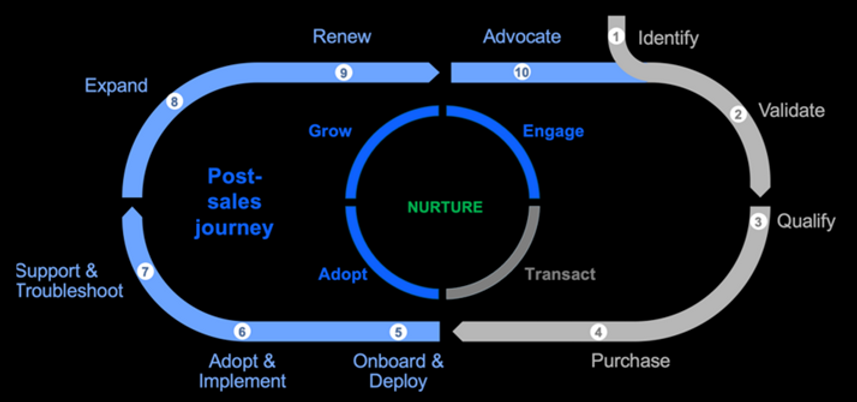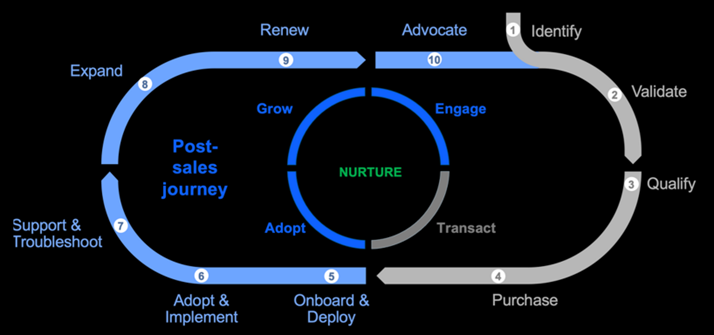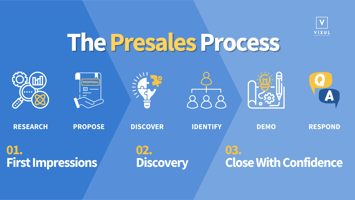This is a guest post by Syed Danish Irfan. Danish is a leader focused on client success at IBM. He...
Understanding the Client Engagement Model: A Beginner’s Guide

This is a guest post by Syed Danish Irfan. Danish is a leader focused on client success at IBM. Based on his experience with a mature tech services provider, we asked him to share his insights on complete customer success.
In my role at IBM as a client success leader, I interact with many tech services, large and small. What I notice about the typical services startup is that they see their relationship with clients as transactional. A client comes in, you do work for them and you move on to the next client.
It is extremely difficult for a tech services company to grow with a transactional model. Instead it is critical for a tech services company to cultivate and maintain strong relationships with their clients. You need a well-structured client engagement model to foster loyalty, enhance customer satisfaction, and drive long-term success.
This article delves into the intricacies of the client engagement model, exploring its significance, key components, and best practices for effective implementation.
What is a Client Engagement Model?
A client engagement model is a strategic framework that outlines how a business interacts with its clients throughout the client's lifecycle. This model aims to create meaningful interactions that build trust, deliver value, and encourage ongoing collaboration. By systematically managing client relationships, businesses can better understand client needs, address concerns proactively, and ultimately drive higher levels of satisfaction and retention.

A high-level CEM for tech services is depicted in the picture above. The client engagement model comprises two sides; the right side reflects Pre-sales journey and the left Post-sales. Both sides are interdependent on one another to provide and maintain a long-term strategic partnership with enterprise clients.
The Post-sales team should always learn about the client’s business objectives, problems they're working to resolve, and market trends in the client's industry domain. Once a prospective opportunity has been identified, pass that lead over to the sales team to pursue. This creates a cycle of continuous growth with the client from post to pre-sales and fosters a long-term strategic relationship.
Importance of a Client Engagement Model (CEM)
Embracing the CEM is a shift in the mindset towards "client centricity," which helps to drive positive impact across various facets of engaging with the client team:
-
Enhanced Client Satisfaction: A well-implemented engagement model ensures that clients receive personalized attention and support, leading to higher satisfaction levels.
-
Higher Customer Lifetime Value: By being proactive about engaging with your customers, you will get more business from the same customer. This means you can spend more resources seeking out customers while maintaining appropriate COS to COGS ratios.
-
Revenue Stability: As a tech services provider, the resource you’re selling is time. So you have a product with zero shelf-life. This shows up in your planning as utilization. But anything you can do to improve revenue stability is essential for growth.
Key Components of a Client Engagement Model
Developing a CEM framework varies in many aspects: by industry, client’s organization size, offering types (product or services), and so on. Hence, it's best to have a tactical approach catered towards your clients, leveraging the avenues below to consider:
-
Personalized Communication: Develop a communication plan that personalizes interactions based on client preferences and behaviors. Utilize various channels such as email, phone calls, and social media to maintain regular contact.
-
Value Proposition: Clearly articulate the value your business offers to clients. This includes understanding their pain points and demonstrating how your solutions address those challenges.
-
Feedback Mechanisms: Implement systems to gather and analyze client feedback regularly. This helps in identifying areas for improvement and making necessary adjustments to enhance the client experience. One avenue is through Quarterly Business Reviews (QBRs)
-
Proactive Support: Anticipate client needs and offer proactive support. This involves regular check-ins, providing resources, and ensuring clients are maximizing the benefits of your products or services.
-
Performance Metrics: Define key performance indicators (KPIs) to measure the effectiveness of your engagement strategies. Common metrics include customer satisfaction scores, Net Promoter Score (NPS), and retention rates.
Best Practices for Implementing a Client Engagement Model
Adopting the CEM framework requires a structured approach and personalized commitment towards each client. This begins by understanding the client’s organization, learning to speak their language, and embracing their values toward business goals.
Below are some pointers to achieve this:
-
Develop a Client-Centric Culture: Ensure that your organization's culture prioritizes client satisfaction. This involves training employees to adopt a client-first mindset and empowering them to make decisions that benefit the client.
-
Align Across Departments: Ensure that all departments within the organization are aligned and working towards common client engagement goals. Collaboration between sales, marketing, support, and other teams is essential for a seamless client experience.
-
Leverage Technology: Utilize customer relationship management (CRM) systems and other technological tools to streamline and enhance engagement activities. Automation can help manage routine tasks, allowing your team to focus on more strategic interactions.
-
Continuous Improvement: Regularly review and refine your engagement model based on client feedback and performance metrics. Stay adaptable and be willing to make changes.
-
Empower Your Team: Equip your team with the necessary skills and knowledge to effectively engage with clients. Ongoing training and professional development are crucial for maintaining high standards of client service.
Wrapping Up
A well-crafted Client Engagement Model (CEM) is integral to any business's success. By focusing on personalized communication, proactive support, and continuous improvement, organizations can build strong, lasting relationships with their clients.
Implementing an effective engagement strategy not only enhances client satisfaction but also drives growth and ensures a competitive edge in the market. By prioritizing client needs and fostering meaningful interactions, businesses can achieve sustainable success and thrive in today’s dynamic business landscape.
In the next couple of articles, we will take a step deep into the two sides of the CEM, the pre-sales and post-sales journey with the client. The discussion will reflect effective sales techniques towards deal closures and best practices to transition into post-sales led by Customer Success.





